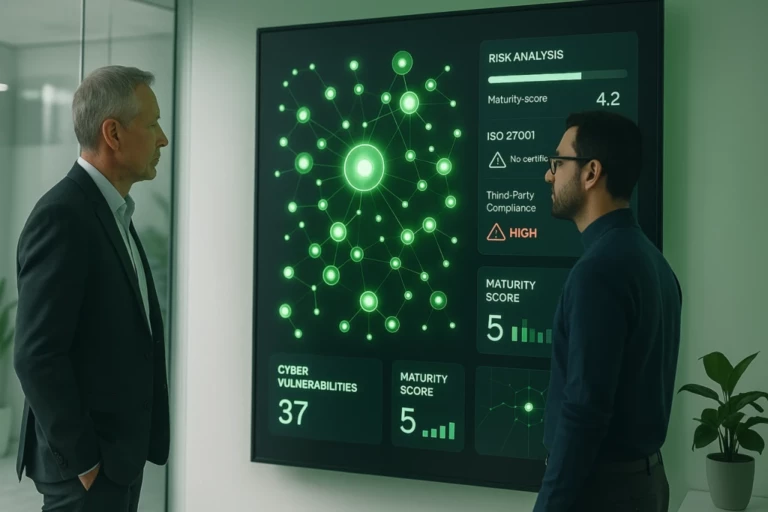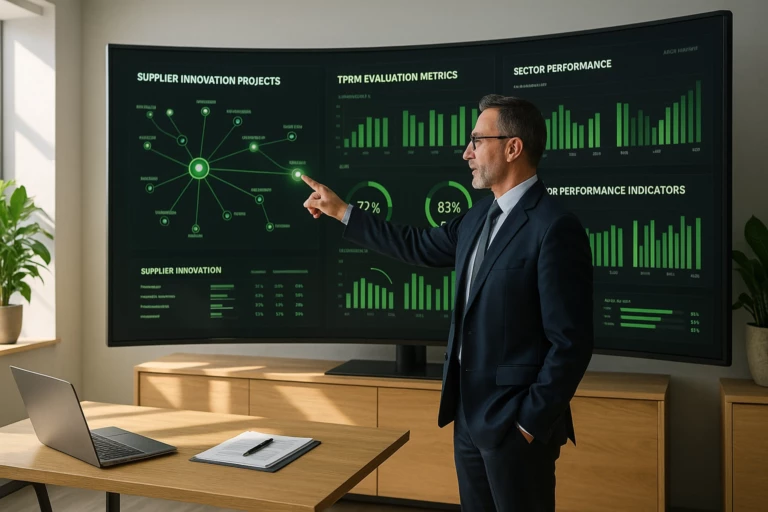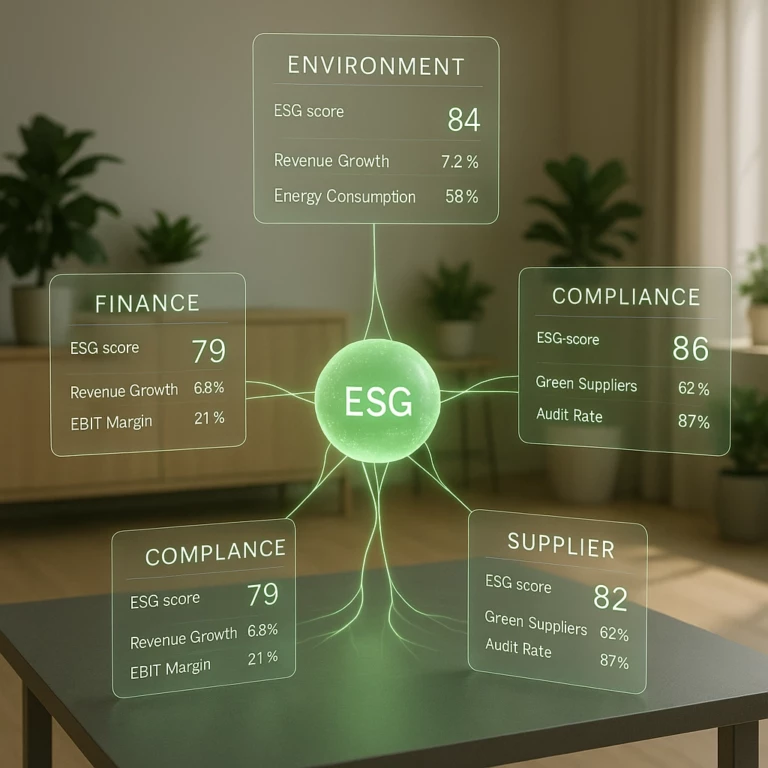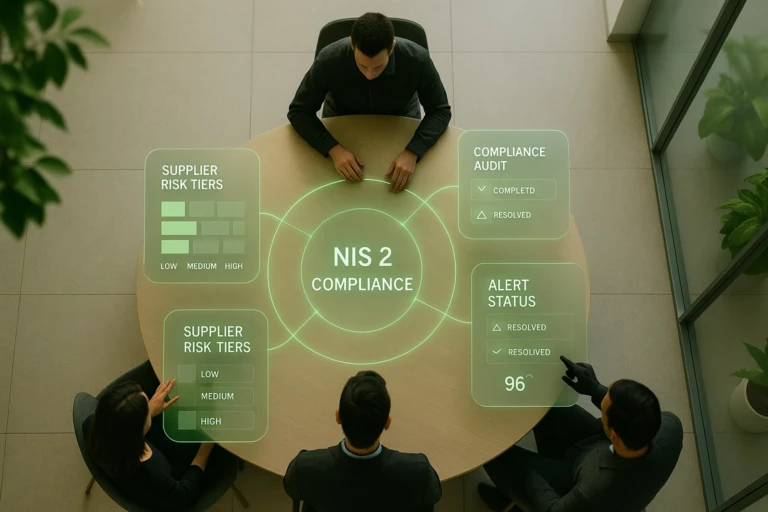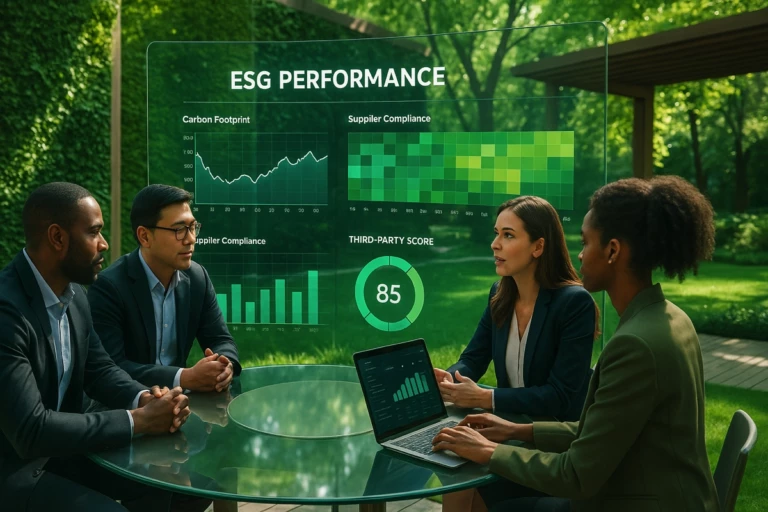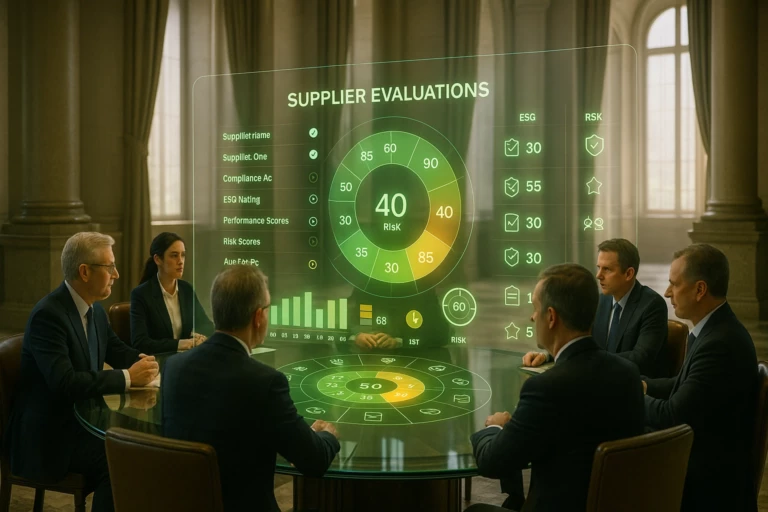Environmental Criteria for Third-Party Partner Evaluation
More and more companies are incorporating environmental preservation into their overall strategy. Whether through sustainable practices or compliance with the CSRD (Corporate Sustainability Reporting Directive), these organizations aim to reduce their ecological footprint. The evaluation of suppliers plays a crucial role in this process, using various environmental criteria to ensure a responsible supply chain. What […]
Understanding the Impact of the NIS 2 Directive on the Supply Chain
The modern supply chain forms the backbone of European economies, orchestrating complex flows between partners, suppliers, and subcontractors. With the acceleration of digitalization, this growing interconnection exposes organizations to unprecedented cyber vulnerabilities. The NIS 2 directive, effective since October 2024, is revolutionizing the cybersecurity approach by mandating collaborative evaluation of third-party partners. This regulatory shift […]
Choosing Your TPRM Platform: A Guide to Efficient Third-Party Risk Management
Third-party risk management (TPRM) has become a major strategic issue for European companies. With the TPRM market valued at USD 6.1 billion in 2023 and projected to reach USD 18.7 billion by 2030, adopting a TPRM platform is essential for navigating today’s complex regulatory landscape. But how do you choose the right TPRM platform tailored […]
Automating CSRD Reporting: A Guide to Streamlined Compliance
The implementation of the EU CSRD directive is revolutionizing how companies approach sustainability reporting. This regulatory shift requires organizations to rigorously assess and document the ESG practices of their external partners, presenting new challenges in data collection and regulatory compliance. How CSRD Is Transforming Third-Party Evaluation The European CSRD directive establishes a stringent regulatory framework […]
Third-Party Cybersecurity Assessment: NIS 2 and DORA Compliance
European companies are facing a major regulatory challenge with the simultaneous implementation of NIS 2 and DORA. These two regulations are radically transforming approaches to cybersecurity and operational resilience, particularly in critical and financial sectors. This convergence requires in-depth multi-regulatory expertise to navigate between specific sectoral obligations and operational synergies. Understanding NIS 2 and DORA […]
ESG Platforms: Centralized Data for Sustainable Performance
The growing interest of investors and businesses in Environmental, Social, and Governance (ESG) criteria comes with significant challenges in assessing third-party partners. According to the DLA Piper report, ESG evaluation of external providers has become critical, particularly with the CS3D directive (Corporate Sustainability Due Diligence) coming into force on July 25, 2024. This directive requires […]
NIS2: Understanding the Obligations of Critical Suppliers
The NIS2 Directive redefines cybersecurity requirements for critical entities and their third-party governance across Europe. With over 1.8 million companies indirectly affected via their supply chains (NIS2 Quality Mark – 2025), identifying critical third parties is now a strategic imperative for key sectors like construction and public services. This regulation mandates a dynamic mapping of […]
ESG Strategy for the Supply Chain: Assessment and Management Methods
The ESG strategy (Environment, Social, Governance) has become a fundamental pillar of corporate operational resilience. According to the 2025 Supply Chain ESG Risk Outlook by LRQA, over half of sourcing countries are now classified as high or extreme ESG risk, challenging the common perception that Western markets are inherently safer. This new reality demands a […]
Supplier Evaluation in the Public Sector: A Strategic Governance Challenge
The public sector accounts for a significant portion of economic activity in France and involves a large number of contract holders. As such, public sector actors face critical challenges in managing supplier relationships—especially since third-party qualification has become a cornerstone of public procurement strategies. Beyond basic oversight, it now forms part of a broader approach […]


